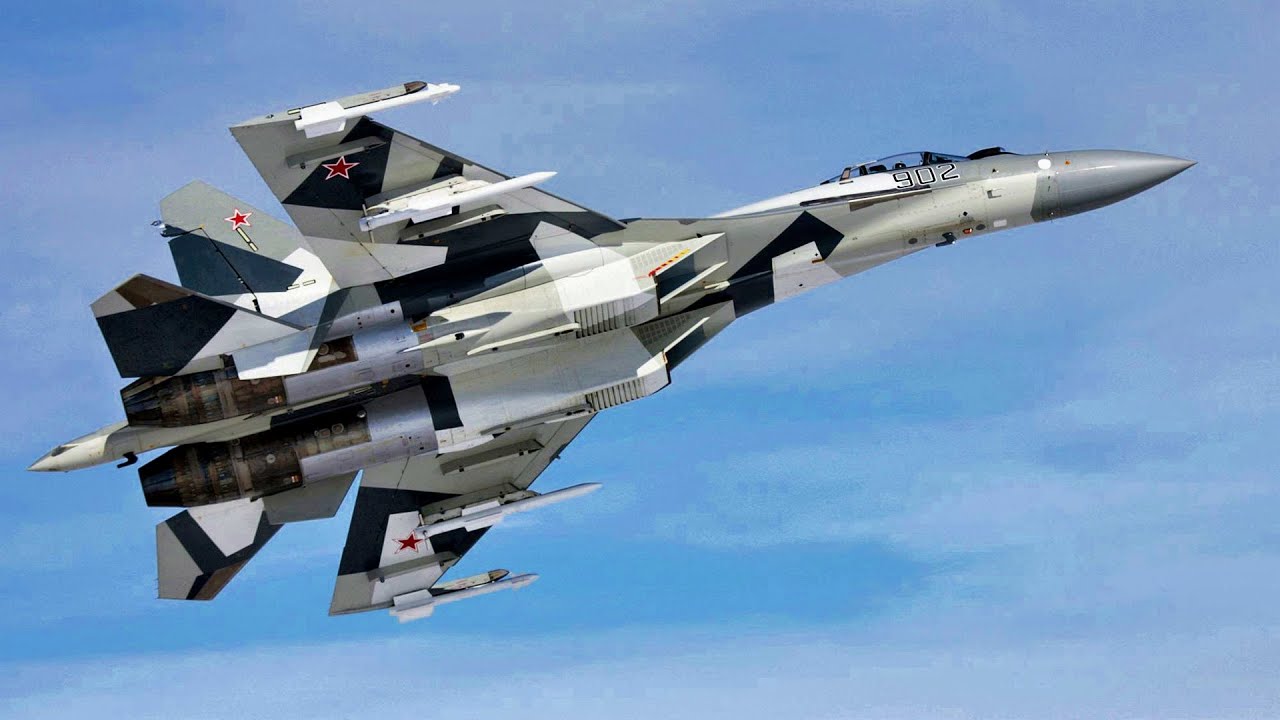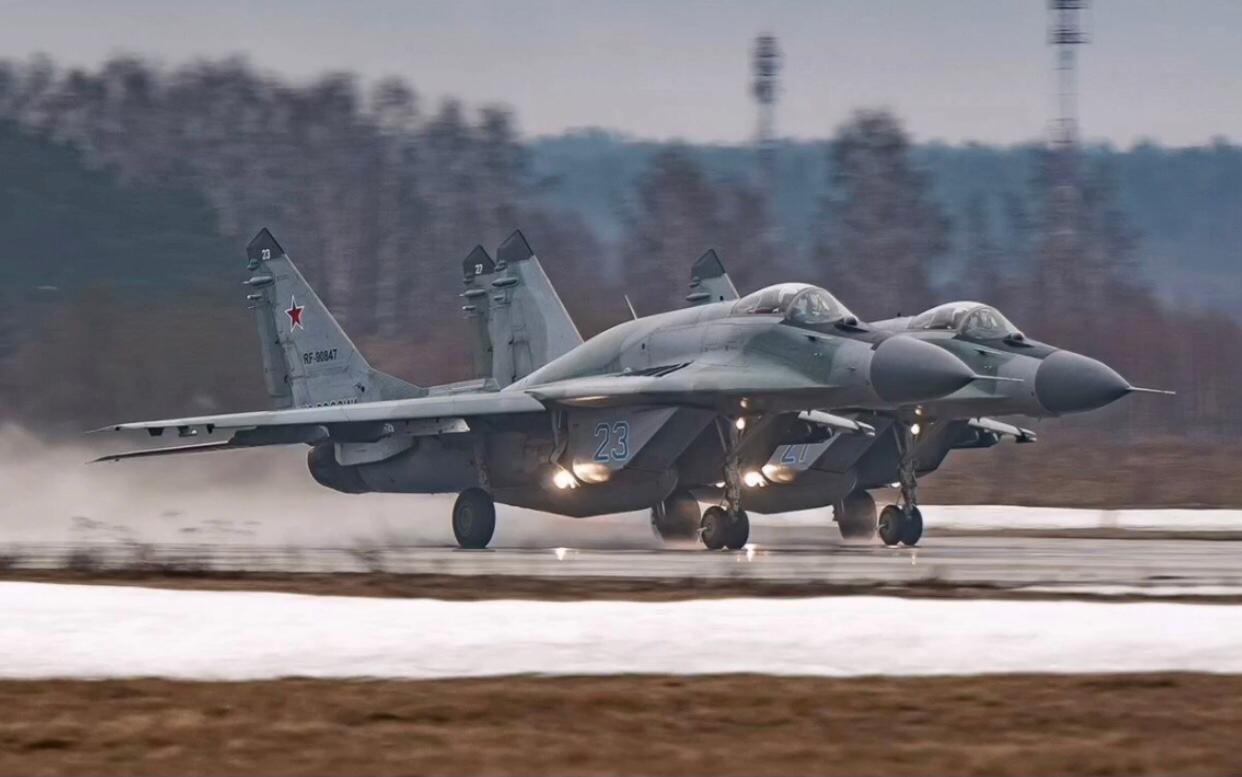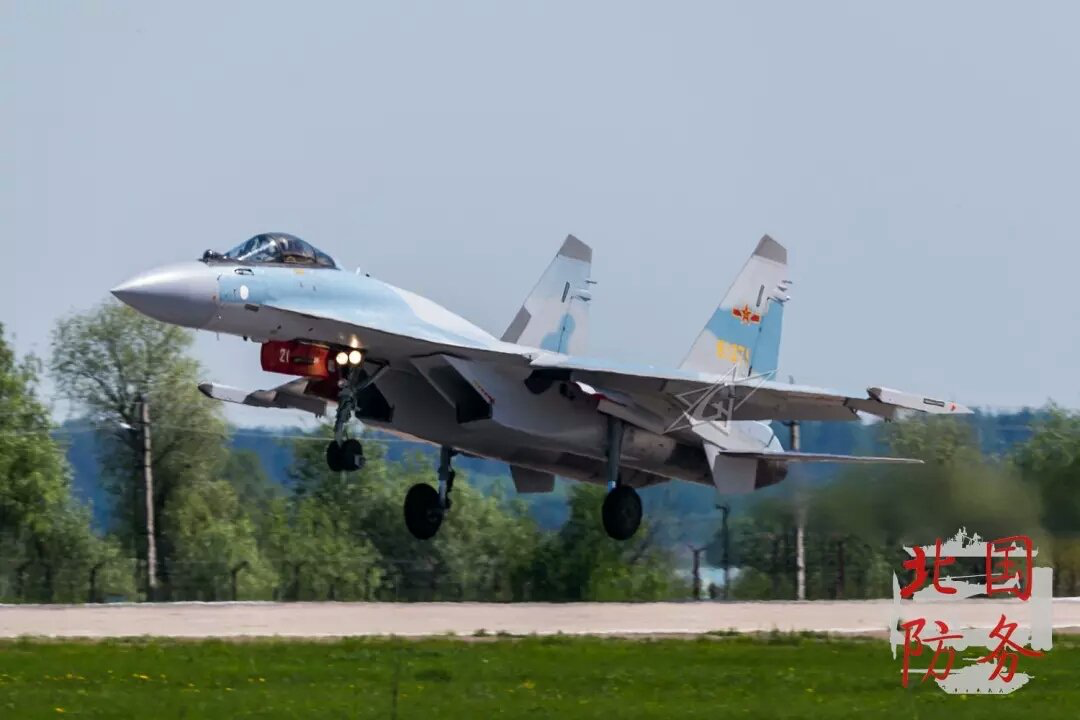A Russian Su-35 fighter was allegedly shot down by a Ukrainian MiG-29 jet in a confrontation in the Kherson region on Friday afternoon, according to the Armed Forces of Ukraine.
“Today, May 27, at about 2 pm, a MiG-29 fighter of the Air Force of the Armed Forces of Ukraine shot down a Russian Su-35 fighter in the sky of the Kherson region,” the air force said in a statement. It went on to say that the Su-35 was “hunting for Ukrainian assault aircraft.”
“Glory to Ukrainian pilots! Death to the occupiers!” the statement added. However, no detailed information regarding the dog fight in the region has been released, and no photographs of the Russian Aerospace Forces (VKS) Su-35 Flanker-E’s wreckage have surfaced on social media to back up the claims.
If the claim is verified, this would be Russia’s second Su-35 loss in the conflict with Ukraine. On April 3, 2022, the first Su-35S Flanker-E was destroyed near Izium near the Kharkiv region. An anti-aircraft missile fired by Ukraine’s Air Force reportedly brought down the aircraft.
Today, May 27, at about 2 pm, a MiG-29 fighter of @KpsZSU shot down a #Russian Su-35 fighter in the sky of #Kherson region, which was hunting for #Ukrainian assault aircraft.
?? Glory to Ukrainian pilots!
Death to the occupiers!#ArmUkraineNow#StopRussia pic.twitter.com/cxst5VHhrY
— Ukrainian Air Force (@KpsZSU) May 27, 2022
The wreckage of a Kh-31 anti-radiation missile (ARM) was also discovered among the Flanker’s debris at the time. The aircraft was said to be assigned to a SEAD (Suppression of Enemy Air Defenses) mission to eliminate enemy ground-based air defense radars.
Meanwhile, both sides claim to have destroyed a large amount of each other’s weaponry. Since the commencement of the war, Russia has allegedly lost a total of 206 combat aircraft, 170 helicopters, 503 unmanned aerial vehicles (UAVs), and 115 cruise missiles over Ukraine’s airspace, according to Ukraine’s General Staff. So far, 27 planes and 43 helicopters have been confirmed as lost or damaged by independent sources.

On the other hand, Russian Ministry of Defense spokesman Igor Konashenkov recently stated, “In total, since the beginning of the special military operation, 178 aircraft, 125 helicopters, 995 unmanned aerial vehicles, 320 air defense systems, 3,243 tanks, and other armored combat vehicles, 425 multiple rocket launchers, 1,658 field artillery, and mortar guns, as well as 3,124 units of special military vehicles have been destroyed”.
Meanwhile, there is no doubt that things did not unfold for Russia as it had hoped. Putin’s forces have already suffered significant losses in the war, and now there are even claims that it is now confronting internal challenges as well.
On Friday, Leonid Vasyukevich, a Communist Party member who serves on a regional legislative assembly in Russia’s the Far East, was thrown out of a high-level meeting with Putin after he advocated for the withdrawal of the troops from Ukraine.
“We understand that if our country does not stop the military operation, there will be even more orphans in our country. During the military operation, young people who could bring great benefit to our country die and become disabled,” Vasyukevich said. As a result, some Russian officials labeled Vasyukevich “a traitor.”
Su-35 Vs Mig-29
The Su-35S “Flanker E” is a 4++ generation aircraft. It is a twin-engine single-seat fighter jet that inherited the Su-27’s extended operational range, substantial armament payload, and superior dogfighting prowess. This jet is often regarded as the best for air superiority operations.

On the other hand, the MiG-29 Fulcrum is a modern 4th generation supersonic fighter. It is a single-seat, twin-engine air superiority fighter designed by Russia’s Mikoyan Design Bureau. It was originally built for air-to-air combat.
The Su-35 has a range of about 3,600 kilometers. In this regard, the Mig-29 falls short, as it has a range of nearly 1,430 kilometers. However, both fighter jets have a similar top speed of roughly Mach 2.25.
Nonetheless, the Su-35 is famed for its extraordinary maneuverability. This two-engine fighter jet features a distinct avionics system that employs a digital information control system and a new radar system that can tackle eight targets at the same time.
Even so, a Su-35S can find one or more MiG-29s to be a worthy foe. Despite significant engine reliability concerns, the MiG-29 appears to perform better at high altitudes and harsh conditions than heavier Sukhoi fighter aircraft, as previously reported by the EurAsian times.
Former Indian Air Force (IAF) pilot Vijainder K Thakur told The EurAsian Times, “Both aircraft can take each other down in terms of radar and missile combination in a BVR encounter and maneuverability and missile combination in a WVR encounter.
Given similar pilot skills, positional advantage, and situational awareness a Su-35 would enjoy a distinct edge over a MiG-29.”
In a dogfight, downing an opponent is nearly always a combination of training, capabilities, external support, tactics, and sometimes even luck. Similarly, the former IAF pilot stated that the outcome of an encounter is determined by the circumstances of the encounter.
Pilot abilities, positional advantage, and situational awareness are never exactly matched in real-world battles. As a result, the outcome of an aerial confrontation is frequently unpredictable.
The majority of aerial engagements in the ongoing conflict between Russia and Ukraine are most likely ‘chance encounters.’
Thakur highlighted the 1971 war between India and Pakistan as an example, stating that a Marut HF-24 gunned down a significantly more maneuverable PAF F-86 Sabre Jet with cannons at almost point-blank range.

He went on to explain that operating at a low level in the same battlespace, the adversary pilots were not aware of each other’s presence. “The IAF Marut, while strafing ground targets, suddenly saw a Sabre Jet in front at close range and let go a burst from his 4 30mm Aden cannons blowing the Sabre jet to pieces!” he added.
Both the Ukrainian MiG-29 and the Russian Su-35 operate at low altitudes in Ukraine because they lack radar coverage, which causes them to lose situational awareness. Thakur said that “in such conditions, a Ukrainian MiG-29 could take out a Russian Su-35 in a chance encounter.”
He also noted that the crucial lesson to remember here is that the outcome of an aerial battle does not always represent the capability of the opposing fighters or pilots.
“I doubt the Ukrainian claim because of the professionalism associated with Russian air force pilots. It is highly unlikely that a Su-35 would descend below radar cover without due diligence and caution,” the former IAF said.
As the war drags on, new claims and counterclaims will continue to emerge. Without any evidence, the credibility of these allegations is essentially non-existent.
- Contact the author at ashishmichel@gmail.com
- Follow EurAsian Times on Google News




